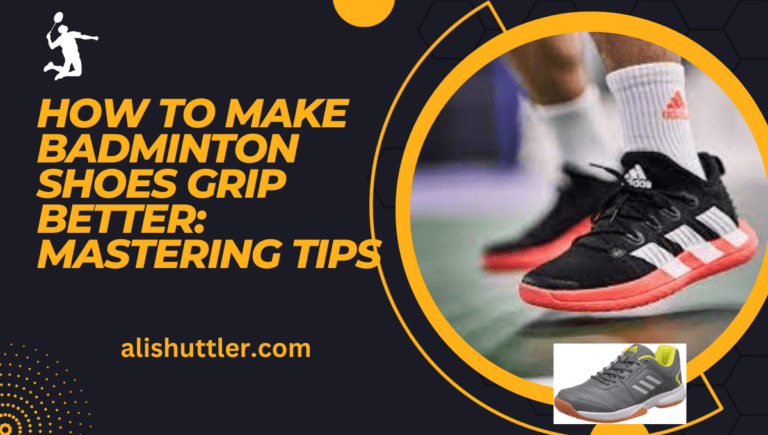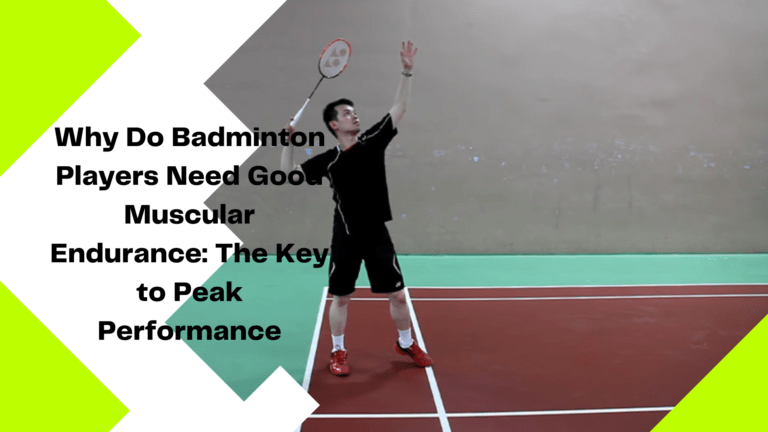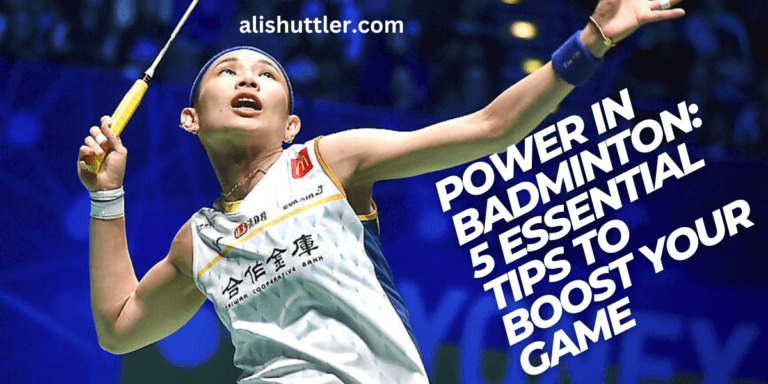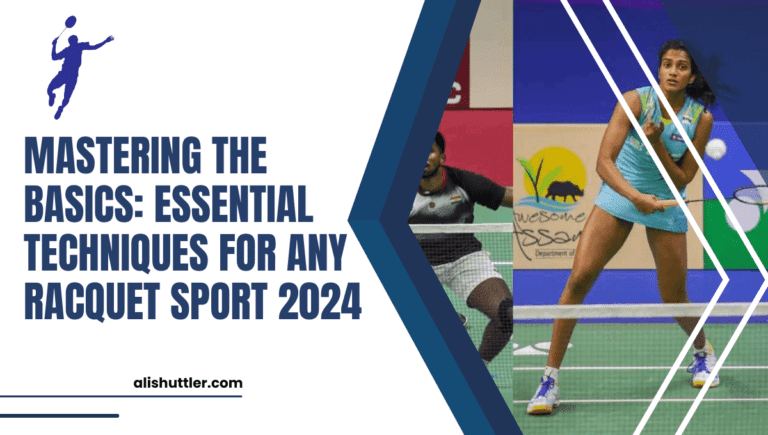Badminton stretches prepare the body for play and reduce the risk of muscle strain. These stretches focus on the arms, shoulders, legs, and back, which encounter fast motions and sudden halts during a badminton game.
Good warm-up stretches, on the other hand, promote improved reach and balance on the court. Dynamic stretches are used by many players before games, and static stretches work well afterwards.
The verses section will deconstruct easy-to-follow routines and advice for every skill level.
Key Badminton Muscles
Badminton stretches require a combination of power, quickness, and equilibrium. The main muscle groups in play include:
- Shoulders
- Wrists
- Core muscles (abs, obliques, lower back)
- Legs (quads, hamstrings, calves, glutes)
- Adductors and hips
Strong shoulders assist with powerful overhead smashes and fluid racket swings. Fast wrist power allows for rapid grip switches and cutting smashes. A solid core maintains equilibrium and quick maneuvers on the court.
Shoulders
Sharpen shoulders with resistance bands, push-ups, and overhead presses to increase shot speed and maintain racket stability. Shoulder stretches, such as arm circles and cross-body stretches, maintain the joint’s flexibility for Badminton stretches and prevent injuries. Full shoulder mobility comes from daily wall slides or ‘thread the needle’ moves.
Warm up with dynamic movements, like shadow swings, that prepare the shoulders for quick, powerful strikes.

Wrists
Wrist strength is critical for controlling the racket. Moves such as light dumbbell curls, squeezing a stress ball, or a hand gripper develop muscle and control. Flexor and extensor stretches, such as bending the hand back or down, lightly relax tightness and maintain wrist mobility.
This is crucial as bad wrist care can cause tennis elbow and other injuries. Wrist circles and light rotations must be incorporated in every warm-up to prepare for the lightning snaps and turns in badminton.
Core
Planks, Russian twists, bicycle crunches, and side bridges are all solid core moves. Incorporate these into your routine to aid endurance and keep your body strong for those long Badminton stretches. Moves that twist the core, such as standing rotations, help you switch directions quickly.
This good core strength stems from daily planks and keeps you balanced when you jump, reach, or lunge.
Legs
Legs do the heavy work: they let players dash, stop, leap, and lunge. Solid quads and hammies provide the grunt for smashes and swift footwork. Squats, lunges, and calf raises. They’re simple, but effective.
Calf Badminton stretches prevent tightness, and quad and hamstring stretches, and Badminton stretching keep legs loose and reduce injury risk. Lower limb injuries predominate, accounting for more than 40% of cases, with knee and Achilles tendon complaints most common.
The “Stanish Protocol,” a tried and tested approach for turning the Achilles tendon into a springier, stronger coil.
Stretching Philosophy
Badminton stretches require movements, explosive speed, and sudden directional switches. Stretching isn’t just anti-injury–it can help you boost your skill, accelerate recovery, and keep you primed for the next game. Different stretches matter at different times, each with its purpose.
A daily schedule that incorporates both dynamic and static Badminton stretches, pre- and post-playing, keeps the body moving more efficiently and recovering more quickly.
- Dynamic stretching regimens get the body prepped and warmed up before a match, priming muscles and joints for explosive movements.
- Post-play static stretching is crucial for recovery, relaxing, and lengthening muscles.
- Blending both into a fixed routine promotes improved flexibility, range of motion, and reduces the likelihood of muscle strain injuries.
- Consistent stretching is associated with better athletes’ performance and quicker recovery, since it maintains muscles healthy and joints primed for action.
Dynamic Warm-ups
Dynamic warm-ups employ movement to prepare muscles for action. In badminton, this translates to utilizing match-relevant movements. Leg swings open up the hips, arm circles get ’em loose, and side lunges get those legs firing for those rapid side steps.
These Badminton stretches increase blood flow, assisting muscles in receiving oxygen prior to ramping up to full speed. Throw in some agility drills, such as ladder steps or cone shuffles, to build footwork and sharpen reaction time.
These drills replicate the rapid direction shifts of Badminton stretches and rallies. As the warm-up continues, your tempo should increase. Beginning slow, then scaling up, allows the body to acclimate and reduces the risk of injury.
Studies demonstrate that dynamic Badminton stretches can increase range of motion, jump height, and agility. For example, it demonstrated a 2.62% popliteus angle test change, indicating improved knee function. Where a few studies say dynamic stretching can tighten muscles, others claim it can loosen them. All in all, it gets players stretching and playing better.
Static Cool-downs
Static cool-downs are post-match. These stretches reset the body to slow, returning your heart rate to normal and relaxing worked muscles. Stretches need to be 20–30 seconds long, which allows your muscles time to lengthen and release tension.
Concentrate on the muscles you use the most in Badminton stretches: hamstrings, quads, calves, shoulders, and the lower back. This will help minimize soreness and maintain flexibility for your next session.
I find adding deep breathing helps the body relax more and supports better recovery after a brutal match.
Routine and Recovery
A Badminton stretches routine counts. It primes the body to perform better before a match and recover faster afterwards. Consistent stretching promotes robust joints, reduces the chance of acute muscle pulls, and maintains endurance for extended matches.
Recovery is not just about Badminton stretches. Things like foam rollers are frequently deployed, but their actual impact on muscle tissue is still a matter of controversy. Research illustrates that foam rolling might not increase knee range of motion a lot, but it can alter muscle stiffness.
SMR rollers can’t always back up their marketing claims, so stretching remains a tried-and-true method.
Key Takeaways
Structured Badminton stretches boosts performance, cuts injuries, and speeds recovery.
5 Essential Stretches
Badminton stretches require speedy footwork, powerful swings, and rapid pivots. Stretching these key muscle groups creates a foundation of flexibility, reduces the risk of injuries, and keeps joints flowing freely. By completing these stretches every day, even just 10 minutes, you’ll help your muscles stay loose and primed for every match.
These five essential stretches slot into any routine and are equally well for all skill levels.
1. Lunge with Twist
This twist-lunge combo increases your hip mobility and keeps your core engaged and stable. Standing, step into a lunge with your back knee dropped to the ground and twist your torso towards your front leg. Hang on for around 20 to 30 seconds, maintaining a long spine and downed shoulders.
Form is everything—go slow. This stretch jolts awake the hips and core, both required for speedy side steps and court coverage. Switch sides to even out both hips and core.
Throw this into your warm-up to prepare your body for those fast moves badminton requires.
2. Wrist Flexor Stretch
Wrist flexors can get tight from clutching the racket time and time again. Stretch them by holding out your arm, palm up, and gently pulling your fingers back with your other hand. Don’t jerk. Hold 20-30 seconds, just ‘til you feel a stretch, not pain.
This stretch slides nicely into pre-match rituals. Doing it frequently, on rest days as well, keeps wrists limber and reduces the chance of soreness or strain, particularly during extended play.
Maintaining healthy wrists equals less downtime from pain or strain.

3. Cross-Body Stretch
This stretch targets the shoulders and upper back—both key sources of strain in badminton. Pull one arm across your chest and hold it there with your other arm. Go slow and maintain light pressure so as not to injure the shoulder joint.
Hold for 20 to 30 seconds. This stretch is excellent for cooling down after you play, as it helps muscles relax and remain flexible. Repeat on both sides to maintain even shoulders, essential for fluid swings and overhead smashes.
Daily use aids joint range of motion non-aggressively and can reduce tension post-match. It’s easy but impactful on shoulder health.
4. Standing Quad Stretch
Stand up straight and lift one leg by flexing your knee, drawing your foot to your glutes. Grab your ankle, keeping your knees together. Concentrate on equilibrium to maximize the benefits of the stretch.
Hold 20–30 seconds and then switch legs. Do the following each session to aid the quads’ recovery.
Repeat daily for best results.
5. Cat-Cow Pose
Begin on your hands and knees. Arch your back up (cat), then drop your belly and lift your head (cow). Go slow and breathe deep.
Great for cooling down. Helps your back and core stay loose.
Do for 60 seconds.
Advanced Techniques
These advanced stretching techniques — including myofascial release and PNF stretching — take basic routines a step further, enabling badminton players to achieve new levels of mobility, flexibility, and recovery.
These are the techniques that athletes commonly rely on to boost their performance, avoid injuries, and bounce back quicker. If used correctly, they can assist target muscle groups that support badminton-specific movements such as fast footwork, lunges, and powerful overhead shots.
| Technique Benefits Over Traditional Stretching | |
|---|---|
| Myofascial Release | Targets muscle knots, increases blood flow, promotes faster recovery, and helps prevent injury. |
| PNF Stretching | Greater gains in flexibility, improved range of motion, engages both muscle contraction and relaxation, and faster adaptation for advanced skills |
. Myofascial Release
Foam rollers and massage balls can dig deep into the muscle, alleviating tension that accumulates from quick, aggressive moves on the court. This type of stretch addresses stiffening by helping to break up knots—known as trigger points—that limit your motion and drag you down. For badminton players, incorporating exercises like dynamic arm swings and shoulder circles is crucial for enhancing shoulder stability and overall performance.
We typically tend to pay attention to the calves, quads, and shoulders, which receive the most wear during badminton matches and training. When used post-practice/games, myofascial release can assist muscles in relaxing and preparing for the next badminton game. Maintaining good flexibility is essential for preventing common injuries and ensuring optimal joint mobility.
This approach is associated with fewer injuries, as it releases tight areas that can tug joints out of alignment or cause pulls. Foam rolling athletes find increased lower body flexibility, which is essential for rapid stances and directional changes, such as performing advanced footwork or low blocks. Incorporating a stretching session into your routine can significantly improve your performance on the court.
PNF Stretching
PNF, or proprioceptive neuromuscular facilitation, employs a combination of contracting and relaxing the muscle while stretching to extend beyond static or dynamic stretches on their own. This technique is particularly beneficial for badminton players, as they can improve their shoulder stability and overall performance. You can do this alone, but it usually works best with a buddy for safety and optimal results.
By holding a stretch, pushing into resistance, and relaxing, you can gain range of motion quicker. Badminton players often incorporate PNF stretches for their shoulders and hips to assist with the around-the-head clear or deep lunges, enhancing their ability to execute various badminton strokes.
Incorporating PNF into weekly training can assist with good flexibility training that underpins advanced skills, such as low stances and fast, explosive footwork. Make sure to chat with your partner and don’t force it—talking and controlling are crucial so that you don’t experience any strains or pulls during your stretching session.
Incorporating Techniques into Training
Players can incorporate myofascial release and PNF stretching into their weekly schedule, trying to get at least two to three days. Studies suggest holding stretches for as long as 60 seconds for optimal benefit, particularly post-rigorous training.
Incorporate dynamic stretches, such as lunges and leg swings, pre-game to prepare muscles. Static and advanced stretches assist during the cool down. Over time, these habits can result in improved flexibility and reduced leg injuries.
Safety and Proper Technique
Begin at a gentle pace and master the proper technique for each stretch. Never stretch too quickly or push a muscle beyond its limit. Always use controlled moves and stop if you feel pain.
If you’re working with a partner, check in frequently to ensure the stretch is safe and comfortable.
Common Mistakes
Stretching is an aspect of badminton that’s frequently overlooked, but mistakes during a stretching session can lead to injuries, low flexibility, and a decline in overall performance. Understanding how to improve flexibility level and avoid common injuries is crucial.
| Mistake | Potential Impact |
|---|---|
| Bouncing during stretches | Muscle strain, reduced flexibility |
| Overstretching | Injury, muscle, or tendon strain |
| Wrong timing | Reduced effectiveness, increased soreness |
| Not holding stretches | Little benefit, less flexibility gained |
| Poor breathing | Muscle tension, less relaxation |
| Bad technique/posture | Injury, ineffective stretching |
| Not stretching regularly | Poor progress, limited mobility |
| Skipping cool-down | Increased risk of strain |
Bouncing
Bouncing, or ballistic stretching, is a common mistake in warm-ups. This rapid, jerking motion tears muscles beyond their usual stretch. Rather than aiding, it can result in micro-tears in muscle fibers that result in soreness or injury.
Pounding doesn’t allow your muscles time to relax, so they tense up as protection. Controlled, steady movement is safer and more effective. Slow stretching allows the body to settle into the pose and gradually increases flexibility.
Most routines should stick to static or dynamic stretches with fluid movements.
Overstretching
Attempting to leap too quickly beyond your comfort zone can be counterproductive. Overstretching tends to manifest as stabbing pain or aching, which is an indication to cease. Muscles and tendons require time to adjust.
Straining a stretch can result in microtears or more significant injury. Remain in a range that is slightly straining but never painful. Advancement in flexibility is generated through patience and consistent action.
Small incremental changes are more reliable and more durable than attempting to brute force a result. More than enough to hold each stretch for 10-20 seconds.
Wrong Timing
When you stretch can be almost as important as how you stretch. Dynamic stretches are perfect before a match to get your body warmed up, while static stretches come in handy during cool-down, relaxing your muscles and preventing tightness.
Stretching immediately following exhaustive work without first cooling down can render the muscles vulnerable to strain. Consistent routine, in life and training, keeps flexibility gains stable and the risk low.
Listening to Your Body
To dismiss discomfort or pain while stretching is hazardous. Stretching should be somewhat effortful but not tingly or painful. You’ll want to keep your back straight and use good form to prevent injury.
Breathing deeply relaxes muscles and makes each stretch more potent. Laziness and missing sessions only impede your progress, so make stretching a habit.

Your Stretching Blueprint
A good stretching blueprint for badminton is about more than just choosing a few moves. It should be tailored to your objectives, your physique, and your timeline. Create your blueprint by considering when you play, where you get tight, and what you want to get better at.
Most folks find they do best stretching daily, even on rest days. Target specific areas such as the lower back, hips, quads, hamstrings, and shoulders. If you stretch pre-match, post-match, and even on rest days, you’re going to move better and recover faster. Stay with it for at least a month and you’ll feel a real difference.
Pre-Match
Dynamic stretches first. These are dynamic moves that ready your muscles for the quick tempo and intermittent halts of badminton. Arm swings, high knees, walking lunges, and leg swings stimulate your blood flow and simulate court movements.
Start slow, then accelerate. Shoot for something like 60 seconds per stretch — plenty long to wake up your muscles, without exhausting them. It’s not just your body time. Take these minutes to center your thoughts. Imagine your strategy or simply relax.
When you tie mental prep to physical warm-ups, you hit the court more primed and more alive.
Post-Match
Post-play, transition to static stretching. These assist your muscles in cooling down and begin recovering. Each stretch should be held for 60 seconds. Experiment with some easy shoulder, hammie, quad, and back stretches.
This longer hold allows your body to recover and tells your muscles to repair. Stretching after matches reduces post-play soreness and stiffness. It’s a great opportunity to reflect on your play.
What felt constricted? Where did you shift well? This feedback can refine your next routine and help you address weak spots.
Off-Day
On rest days, stretching is maintaining your gains and repairing sore spots. Easy, unhurried stretches and mild exercise such as brisk walking or cycling keep your circulation going so you don’t feel so stiff.
You can work with foam rollers or just simple stretching yoga poses that feel good. Rest days aid your body in recovering from tough practices. You don’t need to stretch for hours—ten minutes is plenty if you do it right.
Over the long term, this habit staves off stiffness and keeps your muscles primed for the next bout.
Consistency and Adjustment
Daily stretching gets the best results. You miss a day and it knocks you behind. If you feel less tight or can reach further, update your blueprint to the new level.
Shake things up if you feel stagnant or your body craves it. Track your progress, and tweak as you go.
Conclusion
Badminton stretches your body to the test, so clever stretches keep you loose and help you play tough. Every stretch in your plan targets a key muscle that gets used most on the court. Easy moves pre- and post-games that prevent strains and stiff joints. We all tend to skip warm-ups or speed through cool-downs. These slow, deliberate motions go a long way. Short sets – slot them into any day, at home or the gym. Be patient and listen to how your body responds to each motion. To keep your game crisp and your body secure, toss these stretches into your routine. For additional advice, see more guides or consult a local sports coach for input.
Frequently Asked Questions
What muscles should I focus on stretching for badminton?
To enhance your overall performance in badminton, focus on targeting your shoulders, wrists, back, hips, thighs, and calves through specific stretches and dynamic arm swings that improve joint mobility.
When is the best time to stretch before playing badminton?
Stretching after a light warm-up, like jogging or skipping, prepares your muscles for movement and enhances joint mobility, minimizing the risk of sports injuries.
How long should I hold each badminton stretch?
Hold all stretches, such as the overhead shoulder stretch and dynamic arm swings, for approximately 20–30 seconds. Repeat each 2–3 times to enhance flexibility and prepare your body for the next badminton practice.
What are some common stretching mistakes in badminton?
Typical blunders include bouncing stretches and stretching cold muscles, which can lead to sports injuries or weaken overall performance.
Do advanced players need different stretches?
Yes, experienced badminton players can require deeper, more dynamic arm swings and shoulder stretches to complement their increased activity intensity, incorporating sport-specific actions for improved athletic performance.
Can stretching help prevent badminton injuries?
Indeed, constant stretching increases flexibility and range of motion, enhancing overall performance and helping to avoid typical injuries such as strains and sprains.
How often should I stretch if I play badminton regularly?
Incorporate a stretching session pre and post each practice to enhance your flexibility level and protect your shoulder muscles.






